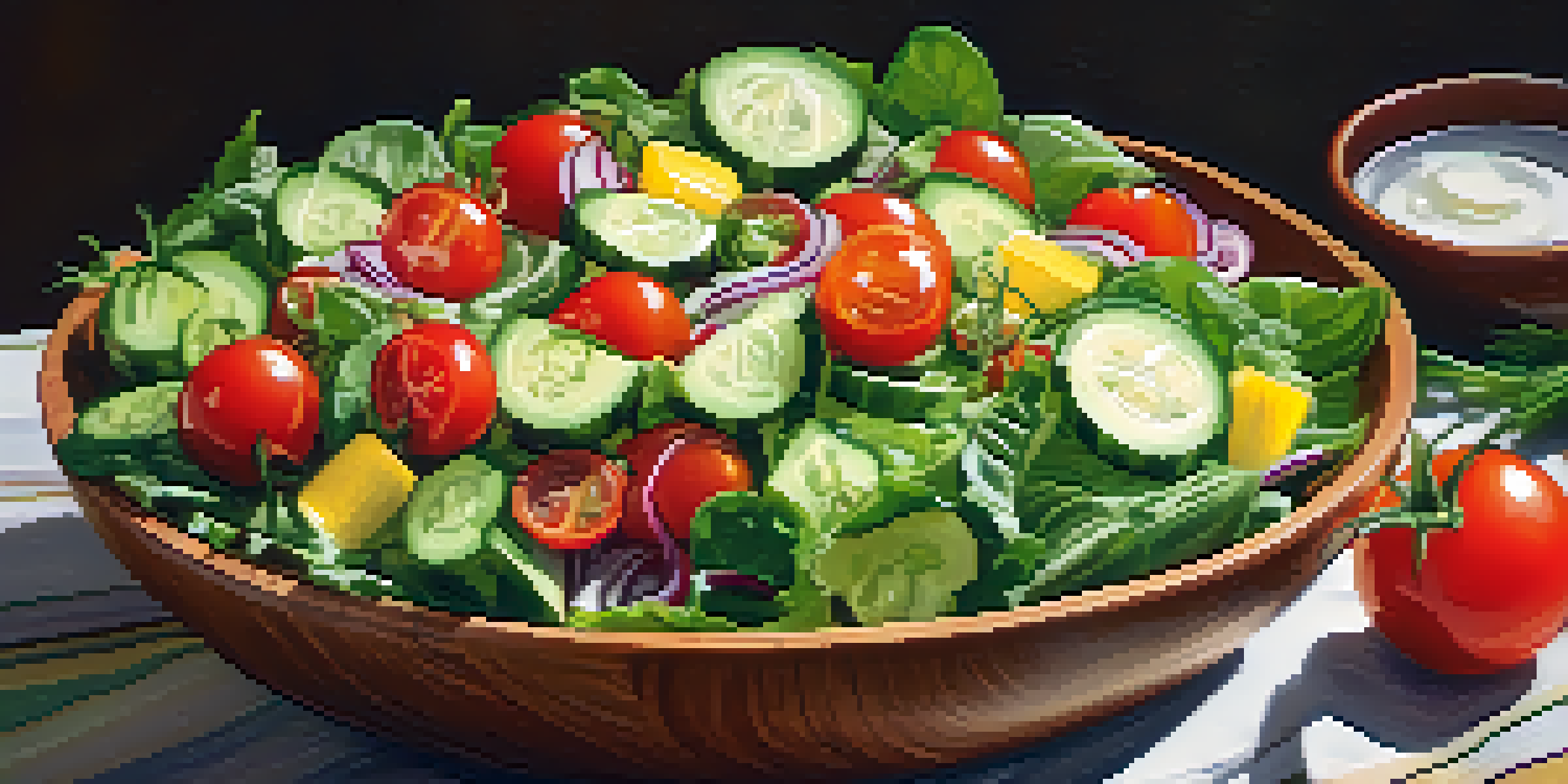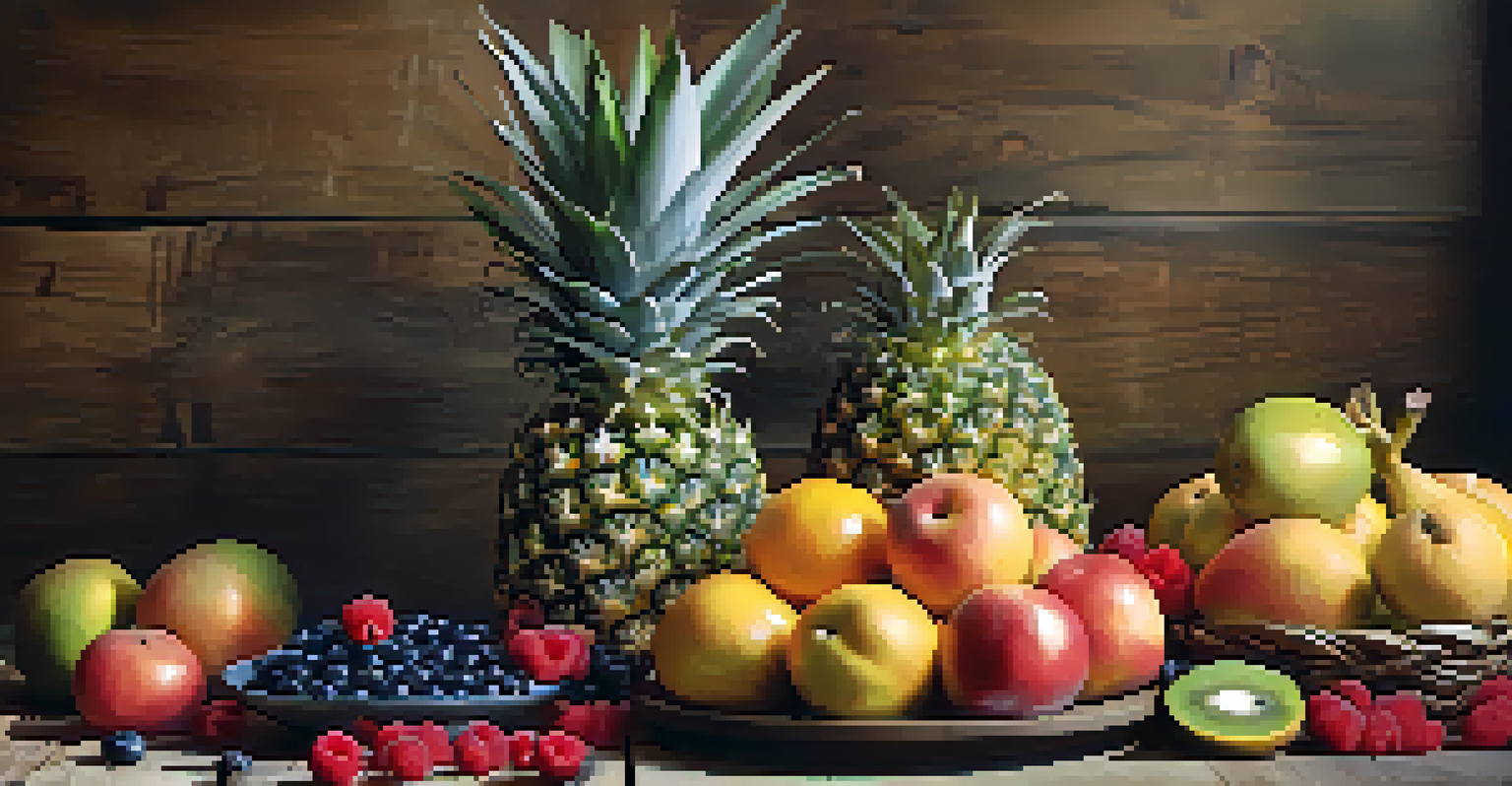The Science of Food Combining in Raw Diets

What is Food Combining and Why Does It Matter?
Food combining refers to the practice of eating certain foods together to enhance digestion and nutrient absorption. The idea is that different foods digest at different rates, and combining them improperly can lead to digestive issues. For example, proteins and carbohydrates are often said to require different digestive environments, which can cause bloating and discomfort when eaten together.
Let food be thy medicine and medicine be thy food.
In the context of raw diets, where fruits, vegetables, nuts, and seeds are predominant, food combining principles can help maximize the benefits of these nutrient-dense foods. Essentially, the goal is to provide your body with the best opportunity to absorb all the vitamins, minerals, and enzymes packed in these foods. This can lead to better energy levels and overall health.
While some may view food combining as just another diet trend, it has roots in various dietary traditions and philosophies. Understanding how to effectively combine your foods can be a game changer, especially for those seeking to improve their digestive health through a raw diet.
The Basics of Food Combining Principles
At its core, food combining revolves around a few key principles: pairing compatible foods and avoiding certain combinations. For instance, fruits are generally recommended to be eaten alone or with other fruits, while vegetables can be paired with either fruits or proteins. This is because fruits digest quickly, while proteins take longer, which can lead to fermentation if not combined properly.

Another important principle is the idea of combining foods that have similar digestive requirements. For example, starchy vegetables like sweet potatoes pair well with leafy greens, as they share a compatible digestive environment. Understanding these combinations helps streamline the digestive process, allowing your body to absorb nutrients more efficiently.
Food Combining Enhances Digestion
Properly combining foods can improve digestion and nutrient absorption, leading to better health.
It's also important to listen to your body. Everyone's digestive system is unique, and what works for one person may not work for another. Keeping a food journal and noting how you feel after meals can help you identify which combinations make you feel your best.
The Role of Enzymes in Raw Food Digestion
Enzymes play a critical role in the digestion of food, especially in raw diets rich in fruits and vegetables. These natural catalysts help break down food into nutrients that our bodies can absorb. In a raw diet, the emphasis is on consuming foods that are high in enzymes, which can support digestion and improve nutrient availability.
You are what you eat, so don’t be fast, cheap, easy, or fake.
For example, raw fruits like pineapples and papayas contain specific enzymes—bromelain and papain, respectively—that aid in the digestion of proteins. This means that when you eat these fruits, they can help your body break down protein-rich foods more effectively, leading to better overall digestion.
Incorporating a variety of raw foods not only boosts your enzyme intake but also enhances your meals' flavor and texture. By focusing on enzyme-rich foods and practicing food combining, you can create more satisfying and healthful meals.
Common Food Combinations to Avoid
Certain food combinations are widely regarded as problematic in the realm of food combining, particularly in raw diets. A classic example is mixing fruits with proteins, which can lead to digestive discomfort. Since fruits digest quickly, they can ferment in the stomach if left to mingle with slower-digesting proteins, causing bloating and gas.
Another combination to steer clear of is starches and proteins, such as eating bread with a meat dish. This pairing can confuse the digestive system, as each type of food requires different enzymes and digestive processes. By avoiding these combinations, you can promote smoother digestion and enhance nutrient absorption.
Avoid Problematic Food Pairings
Certain combinations, like fruits with proteins and starches with proteins, can cause digestive discomfort.
Ultimately, being mindful of these combinations allows you to make educated choices about your meals. Keeping it simple and focusing on what feels good for your body can lead to a far more enjoyable eating experience.
Best Practices for Food Combining on a Raw Diet
To effectively practice food combining on a raw diet, start by planning your meals around compatible foods. For instance, consider a salad with leafy greens, cucumbers, and a light drizzle of olive oil, paired with a side of fresh fruit. This combination promotes better digestion, as the greens can aid in the breakdown of the fruit's sugars without causing any discomfort.
Another best practice is to eat your meals in the correct order. Start with fruits and salads, as they digest quickly, followed by vegetables and then proteins. This ordering can help optimize your body's ability to process each food type without interference.
Experimenting with different combinations and meal structures can also be fun. You might find that certain pairings not only adhere to food combining principles but also tantalize your taste buds, making healthy eating a pleasure rather than a chore.
Listening to Your Body's Signals
One of the most important aspects of food combining and raw diets is tuning into your body's signals. Each individual reacts differently to food combinations, and paying attention to how you feel after meals can provide valuable insights. Do you feel energized or sluggish? Digestive discomfort or contentment?
Keeping a food diary can be a helpful tool in this journey. Jotting down what you eat and how you feel afterward can help you identify patterns and refine your food choices. This practice empowers you to make decisions that align with your unique digestive needs and preferences.
Listen to Your Body's Signals
Tuning into your body's reactions to different food combinations is essential for creating a nourishing diet.
Ultimately, the goal is to create a diet that works for you. By listening to your body and being mindful of food combinations, you can cultivate a nourishing raw diet that enhances your well-being and vitality.
The Bottom Line on Food Combining in Raw Diets
In conclusion, food combining in raw diets is about understanding how different foods interact within your digestive system. By following some basic principles and being mindful of your body's needs, you can optimize your nutrient intake and overall health. The key is to experiment and find what works best for you.
Whether you're new to raw diets or a seasoned practitioner, incorporating food combining practices can enhance your experience. It can transform your meals into delicious and satisfying combinations that leave you feeling great.

So, take the plunge—embrace the science of food combining, listen to your body, and enjoy the vibrant world of raw foods. Your digestive system will thank you!